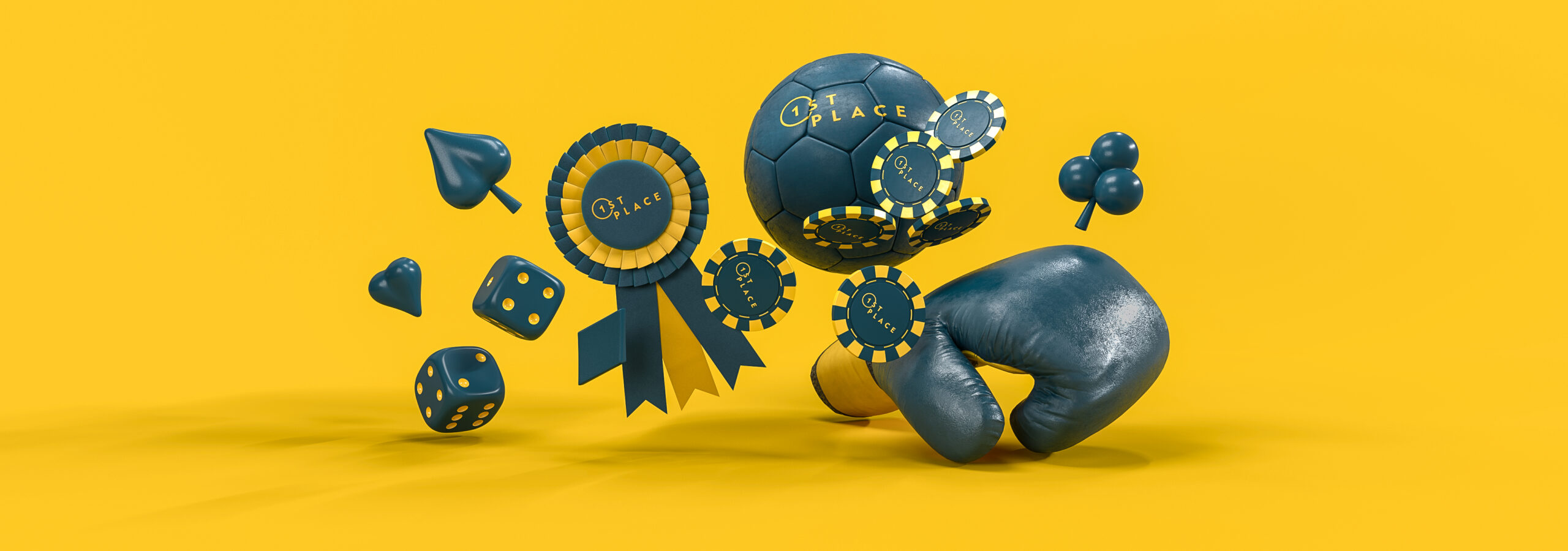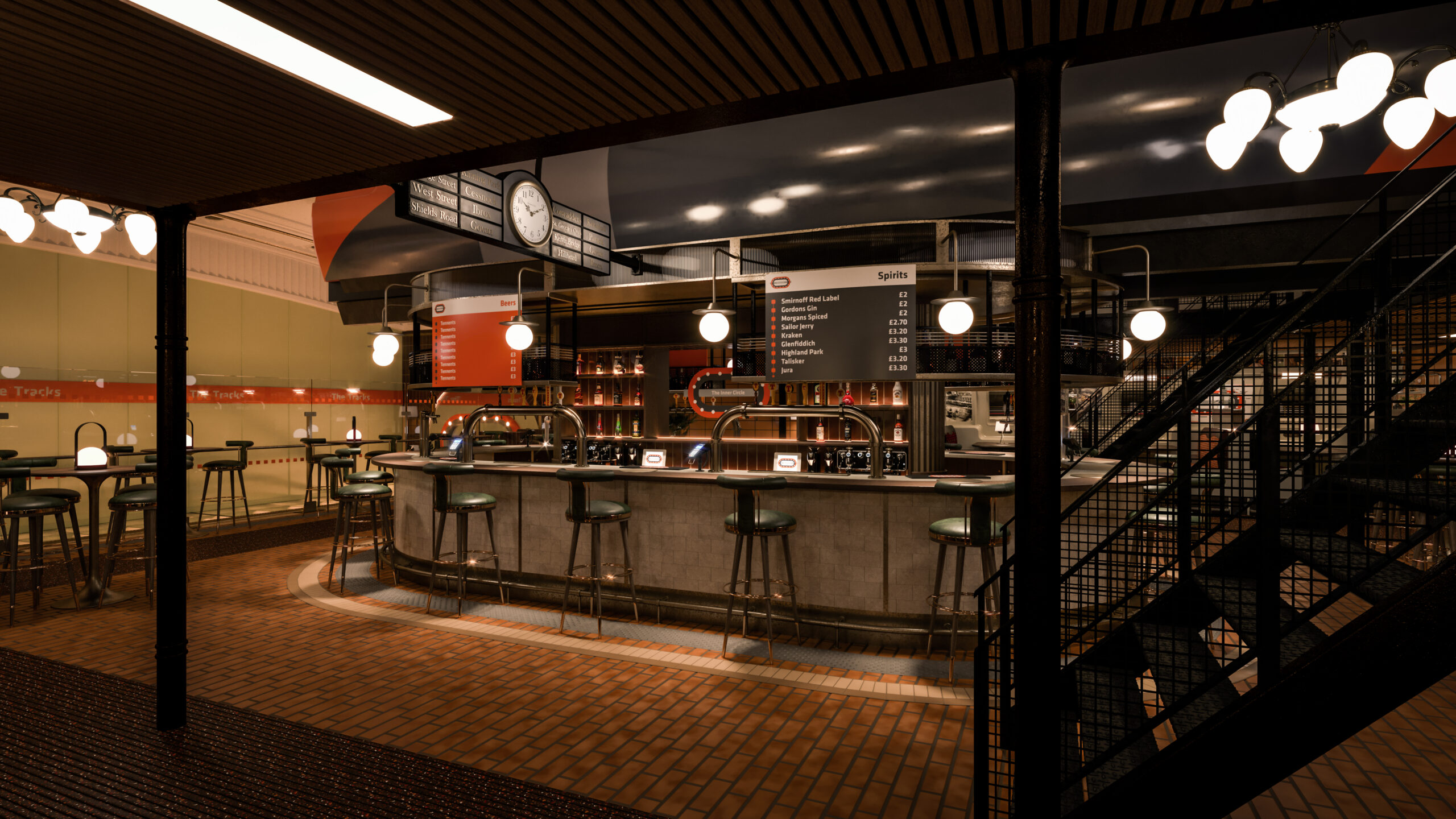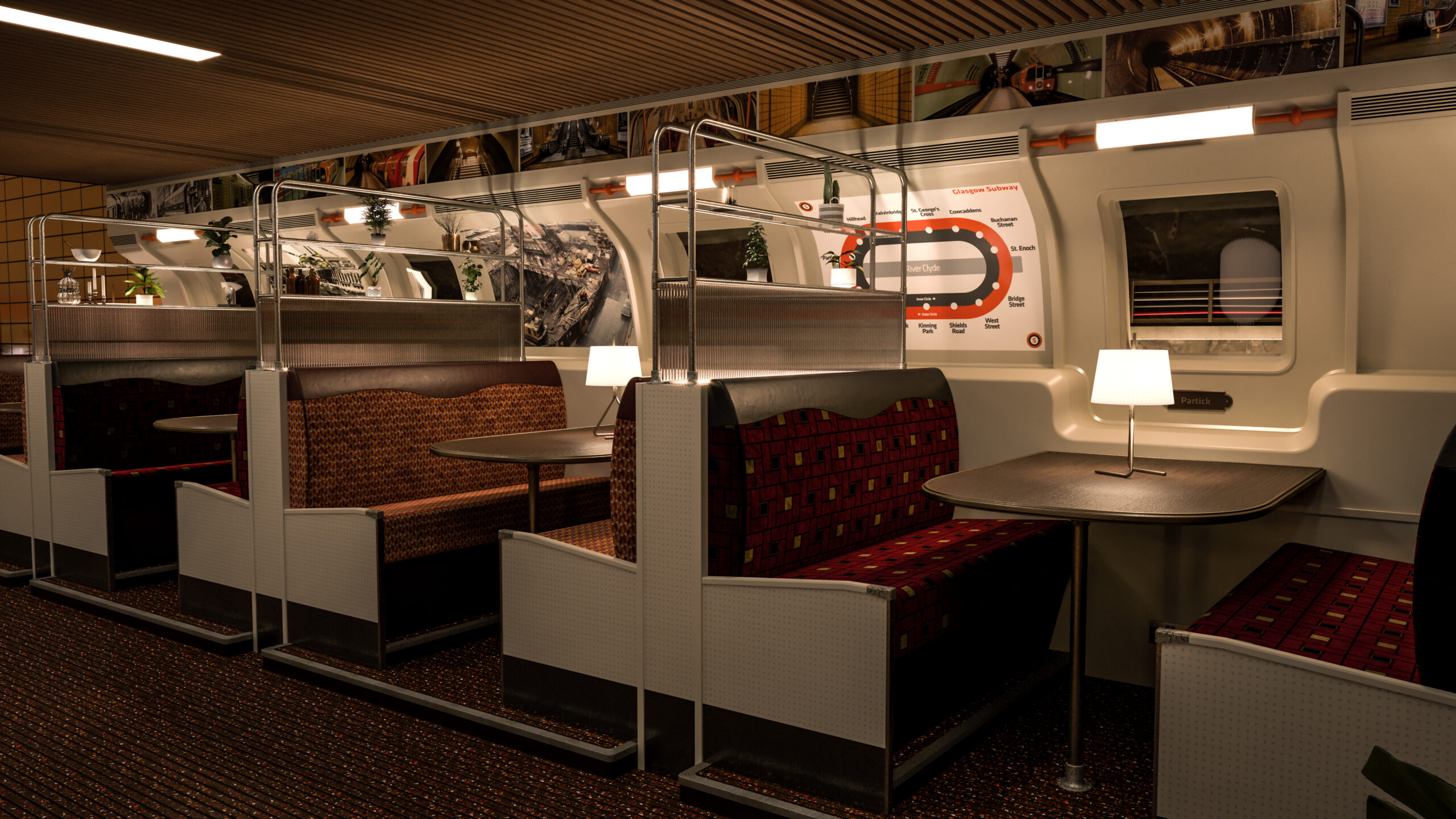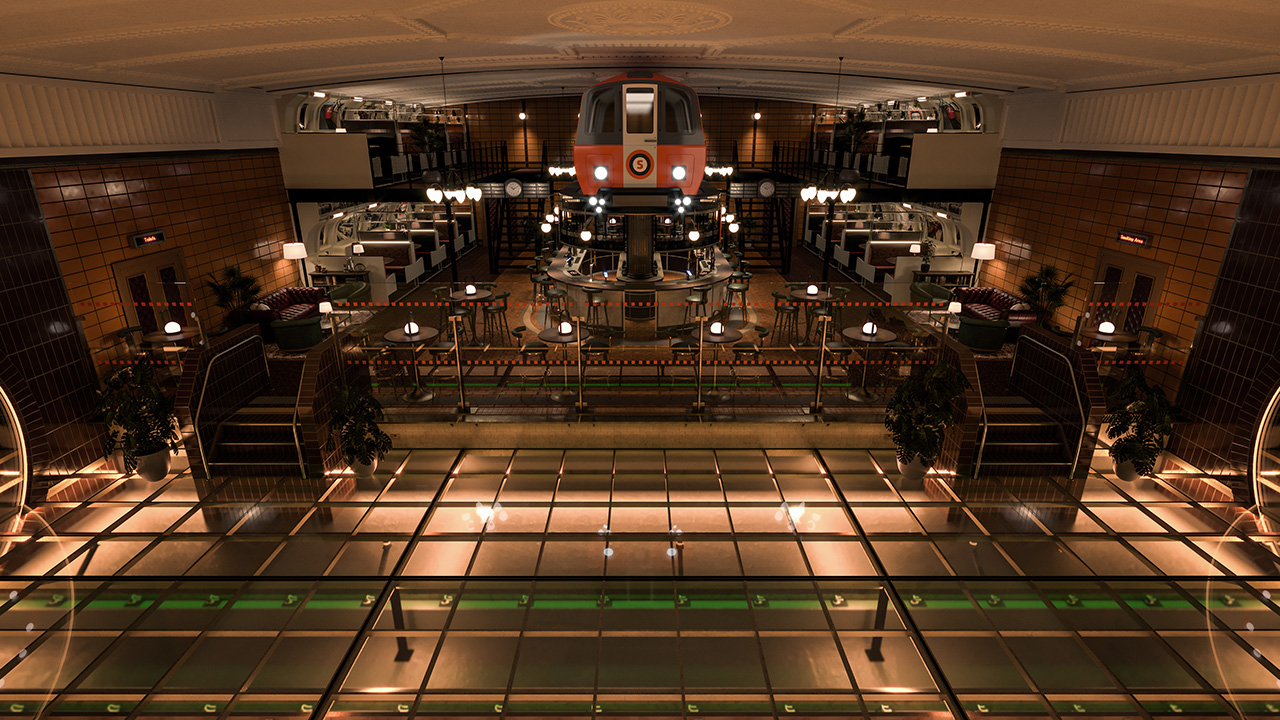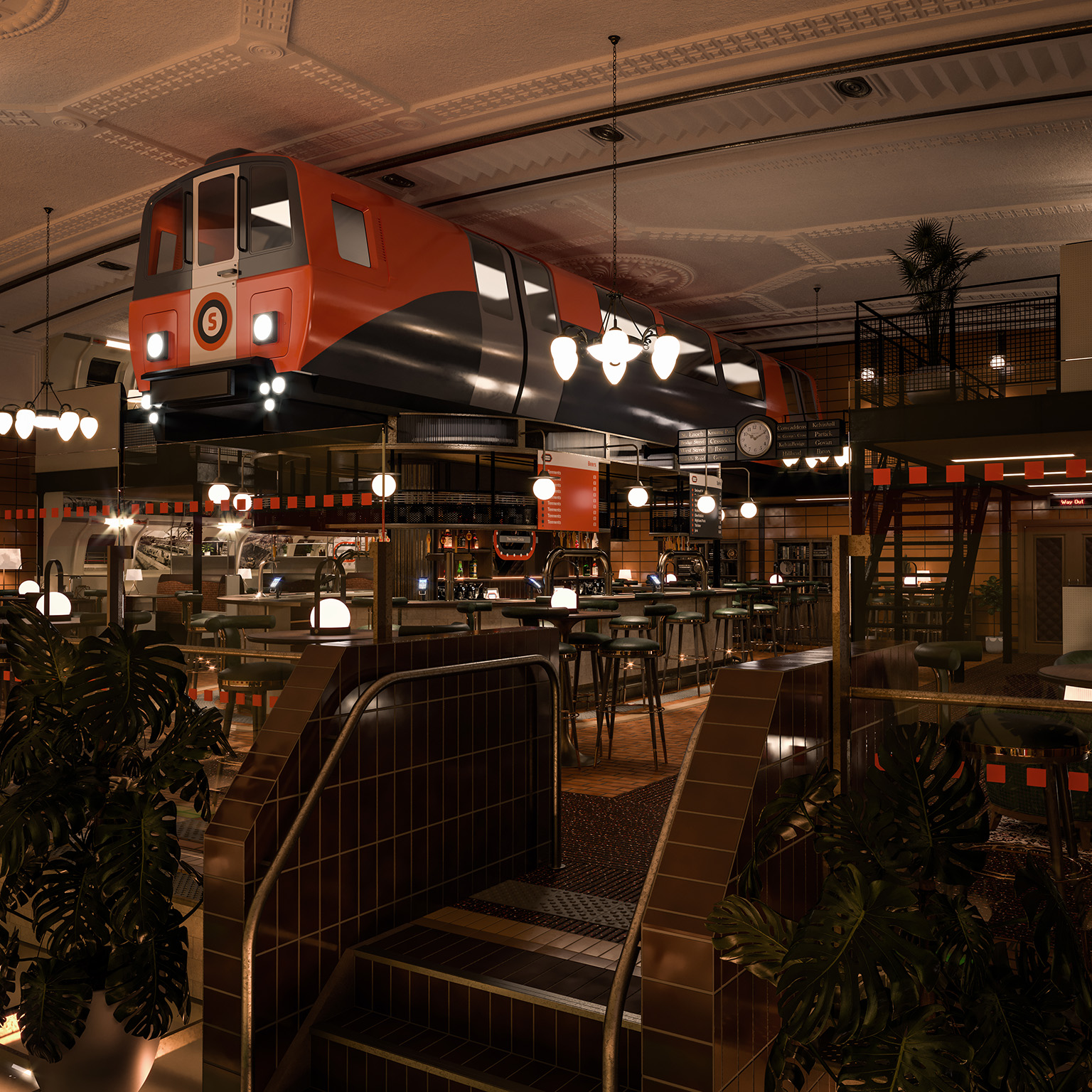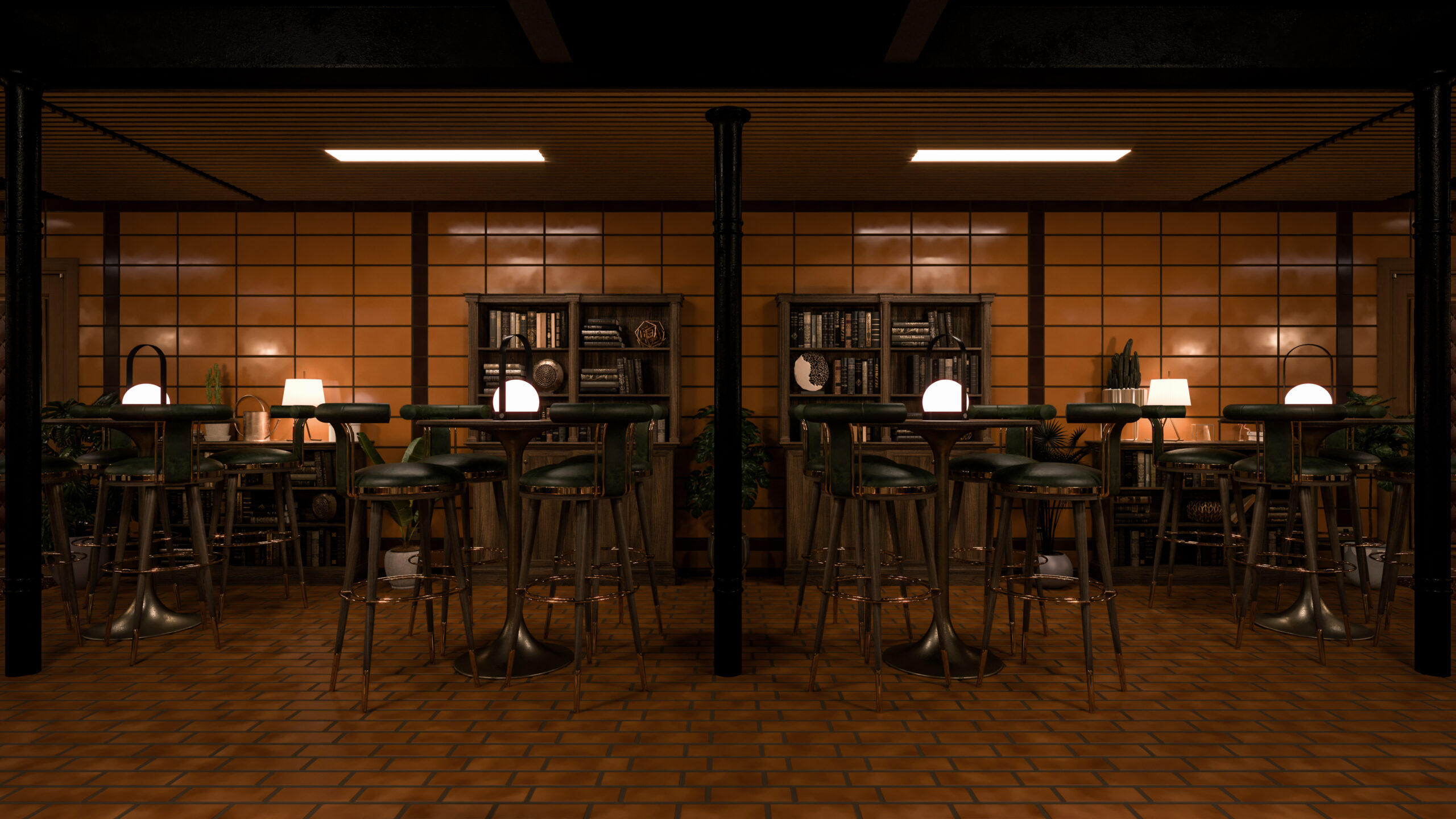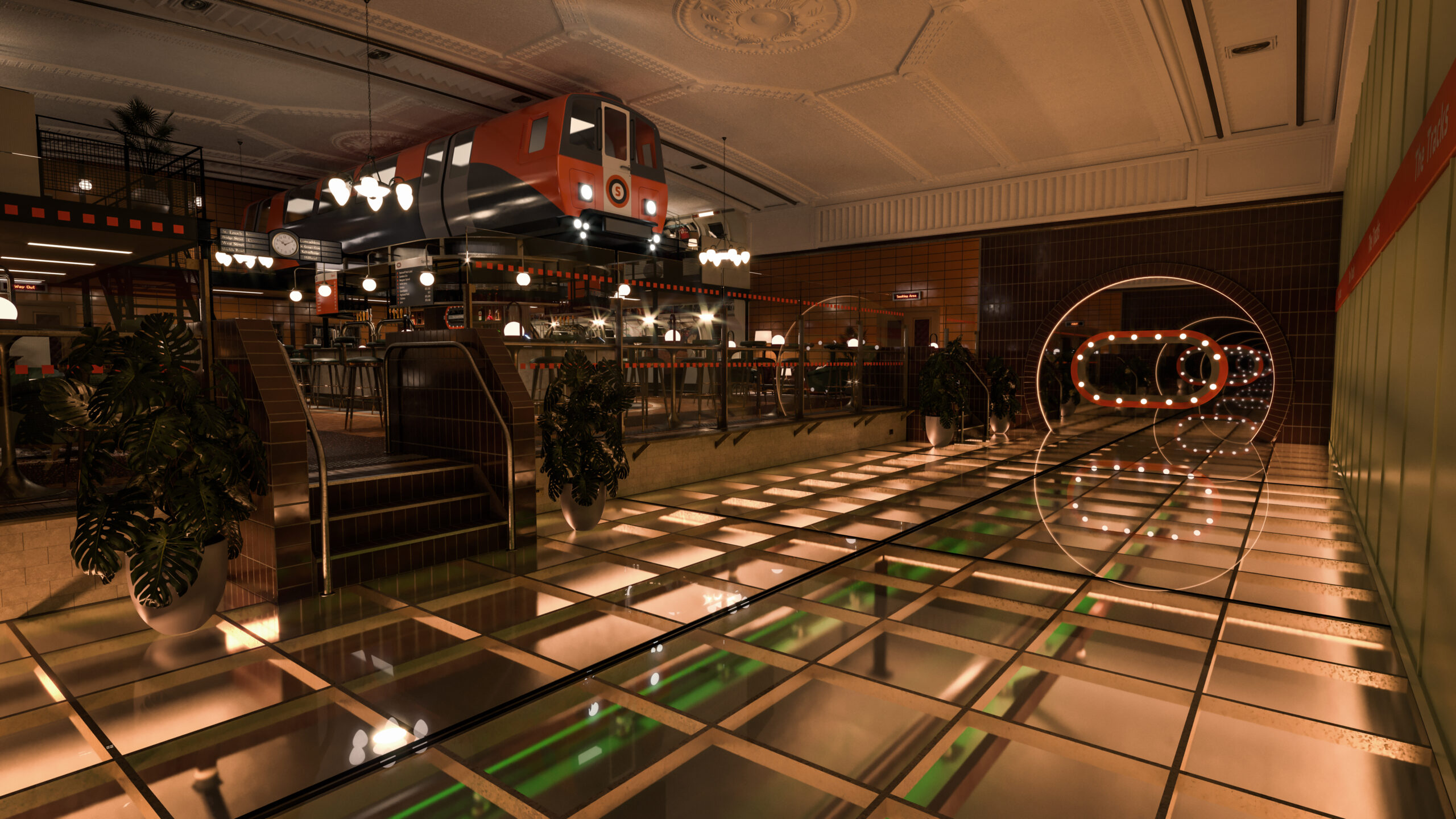In this interview we talk to Steven Bracki about his project ‘The Inner Circle’, how it came about and the inspirations behind it as well as finding out a bit more about the Scottish CG Industry.
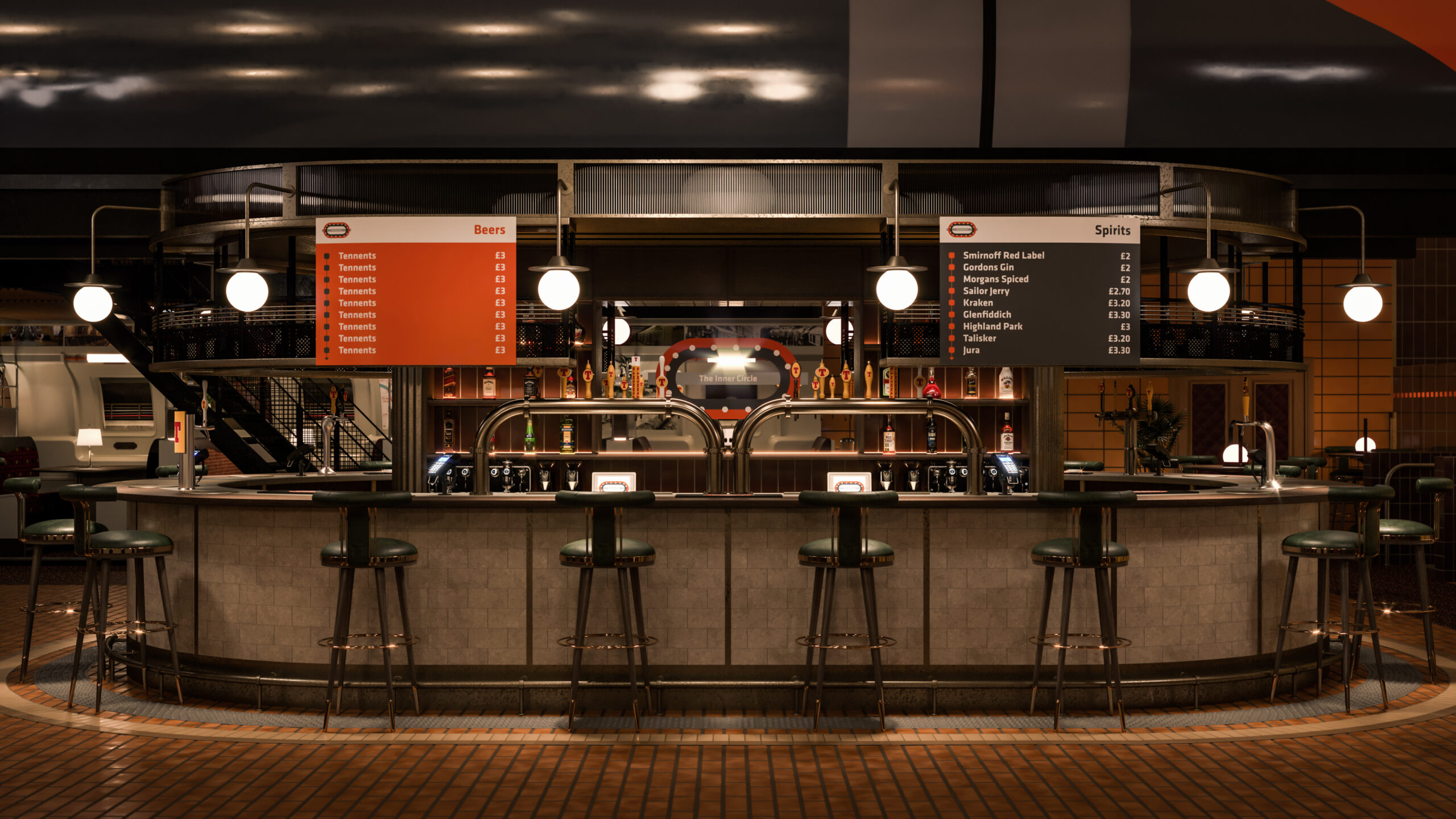
Hi Steven, could you tell us a little about yourself and your work?
I am 26 years old and I come from Ayrshire in Scotland. I studied 3D Computer Animation at Glasgow Caledonian University and after graduating I pursued a career as a CG Artist.
I’ve been working in the industry for five years now and have experience in both full-time and freelance work. Outside of my job I enjoy keeping fit, playing games and cooking! I’ve recently left my full-time job and taken a leap into full-time self-employment, and I’m happy to say I’m off to a very busy, but a great start!
The COVID pandemic has forced a lot of studios to adapt to a new style of working and I think a benefit of this is that a lot of companies are now more open to utilising remote freelance artists.
Whilst I used to work specifically in the Architectural Visualisation (Arch Viz) industry, I’m now working with a variety of clients from lots of different industries that utilise CG visualisation in different ways.
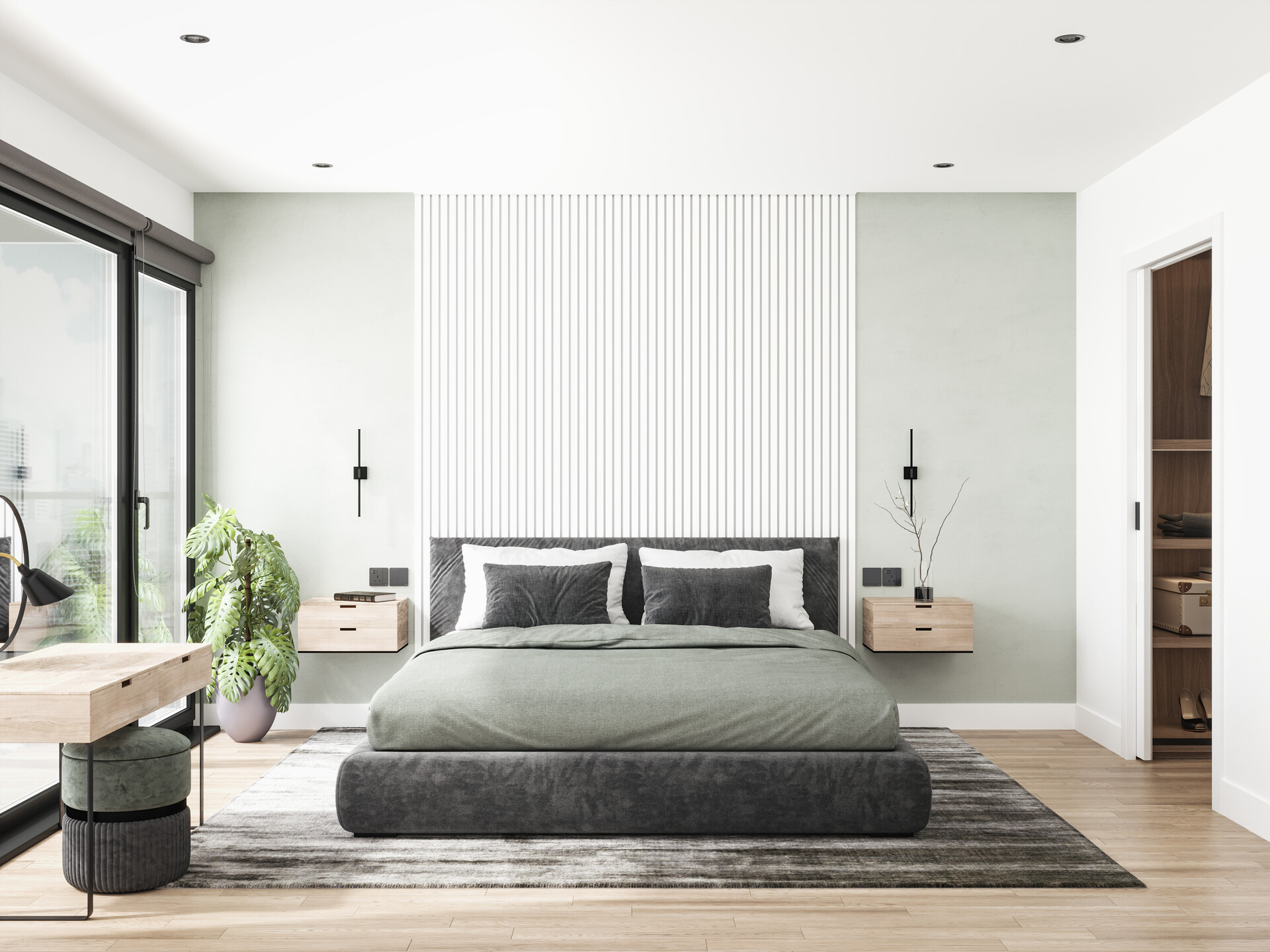
How’s the CG industry in Scotland?
I’d say that the CG industry in Scotland is slowly growing, especially over the last few years. However, you won’t find the same amount of job opportunities as you would in London, for example. In Scotland there are a lot of small to medium-sized studios along with freelancers, but Axis Animation and Rockstar North are probably the two most well-known studios here.
All in all, I’d say the CG industry in Scotland is at a really exciting point as there is a growing number of companies that are all doing really creative and exciting work. My hope is that more CG companies continue to develop and more existing creative agencies continue to adopt CG tools in their workflows. I think this will play a big part in the Scottish CG industry being able to offer a wider variety of job opportunities for artists.
Could you explain to us a bit about ‘The Inner Circle’ and how it came about?
I first had the idea around three years ago when I was trying to come up with interesting ideas that I could visualize. I felt like my day job could be quite prescriptive, so I wanted to come up with an idea that gave me more freedom to design a space, whilst having the challenge of exploring different concepts within it.
When I started looking at the Glasgow Subway, I specifically thought about how the seats could be turned into booths at a bar, and from there I had the idea about creating a Glasgow Subway themed bar.
Did you plan each section out, or was it more of an adaptive process?
I would say it was a mixture of both. For me, the important part was working out what the rough concept would look like, so it was less foggy in my mind. I started to ask myself “what would a night out at this bar look and feel like?” and as I started to answer that question, I looked at different aspects of the Glasgow Subway and how it could all blend together into a list of core ideas that I wanted to feature in the bar. This then provided me with a way to piece the space together.
The Glasgow Subway design has changed a lot throughout its history and so, I decided to come up with an overall colour palette that I felt captured the Subway best, as a whole. I then paired my colour palette up with lighting to help blend each area of the bar together, making it feel like one big space.
Initially, I had so many ideas and it was quite overwhelming, so I decided to focus on one core idea at a time, with the booths being my starting point. After I had the idea of using the carriage seating as booths I found myself looking at the interior design of the subway whenever I was on it and working out how I could use it as inspiration.
I noticed that the difference in height between the subway platform and the tracks was similar to the height of a bar, then I started to think about how I could use that thought to create a bar design in the shape of the Glasgow Subway map.
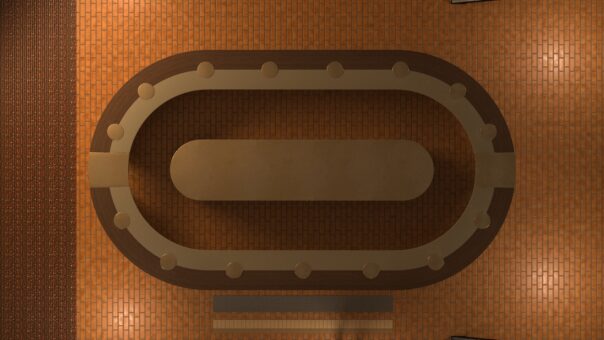
Bar WIP based on the Glasgow subway map 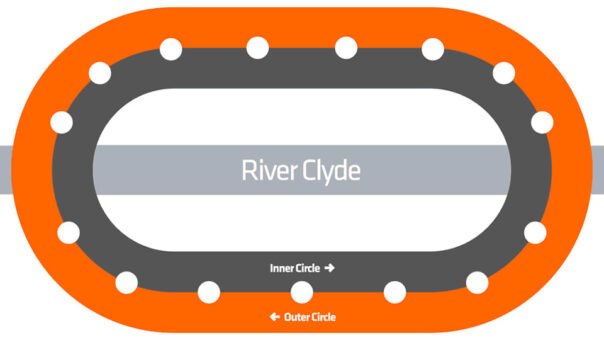
Glasgow subway map
I also looked at how I could use my colour palette and develop it into a material palette that would help people associate the bar with the subway. To help make it feel more like a bar, I sourced a whole host of different reference materials to help create the speakeasy, hidden feeling that I wanted to go for.

How many people worked on the project?
This was a personal project of mine and I was the only person working on it. I did share a lot of work in progress content with friends/fellow artists to get feedback on how everything was looking.
This was a massive help, especially since I am not an interior designer and it was important to me that the final results felt both believable and realistic. It was also a great way to keep me on track (pardon the pun) and motivated whenever I started to feel I couldn’t visualise my ideas the way I wanted to.
What did you learn from the project that might change how you approach future jobs of this nature?
This is a great question; I was on furlough as part of the UK Job Retention Scheme which meant I could work on The Inner Circle project full-time.
I think in future if I were to tackle something this big whilst I have my day job, I’d look to give myself some deadlines/targets to hit in order to keep the momentum up as it would take a lot longer to complete.
How did you first discover Corona Renderer?
I first heard of Corona Renderer around five years ago from a friend, but I started to divert some of my focus towards 2D VFX work and entered that area of the industry for a while.
At the time, I was using Unreal Engine 4 in my day job, so I decided to give Corona another try in my own time as I like to change things up and have some variety in my skill set.
What was it that made you choose Corona for this project?
I think what attracted me to using Corona in the first place was its simplicity, it just felt a lot easier to use than a lot of the other render engines I have used in the past.
I was really happy with the results that I was getting in smaller projects, so I decided to use it for The Inner Circle and currently use it for any project that isn’t set in Unreal Engine, including commercial work such as these renders I created for Maguires & First Place Betting.

How did you approach setting up each shot?
I split the bar up into different areas that I wanted to cover and then for each area I explored any potential overview and close up shots I could use. There was a clear line of symmetry that ran through the centre of the space which I wanted to lean on for my main overview shot.
When I set up the detail shots, I looked out for how the lines and shapes of the space could play into the rule of thirds and golden ratio to create nice compositions. Finally, I used different depth of fields to guide the attention of the shot so people knew what to focus on.
Did you combine any other tools with the Corona?
For the most part, the tools and methods I used to create the space were all very traditional. I did use Poliigon quite a bit for sourcing nice textures.
What was your post-production process?
I had thirteen renders in the end, so I wanted to have an efficient workflow for any post-production. When the bar was around 60% complete, I started to take my test renders into Photoshop and play around with different parameters.
Using the Camera Raw tool, I was able to find a nice balance of settings which I then saved out into a preset that I could apply to all thirteen images. I feel like this approach was efficient and ensured that the final set of images had a consistent look.
What’s next?
I have a few ideas in mind that I’m playing around with. I recently took The Inner Circle concept one step further by taking it into Unreal Engine. It was a while since I used the Datasmith plugin and I was curious to see how my Corona scene would transition over and I can happily say that it went well! It was really cool being able to explore my Corona scene in real-time.
I have recently worked on a few exciting projects that I can hopefully share soon, so feel free to follow my social media pages to keep up to date! You can also find contact details on my website if you wish to get in touch about any future work.
Many thanks to Steven for taking the time to talk to us about this project, we’ll certainly look forward to seeing those new projects when they are released!
Links
Artstation: www.artstation.com/stevenbracki
Website: www.stevenbracki.com
IG: www.instagram.com/stevenbracki/
Twitter: twitter.com/stevenbracki
